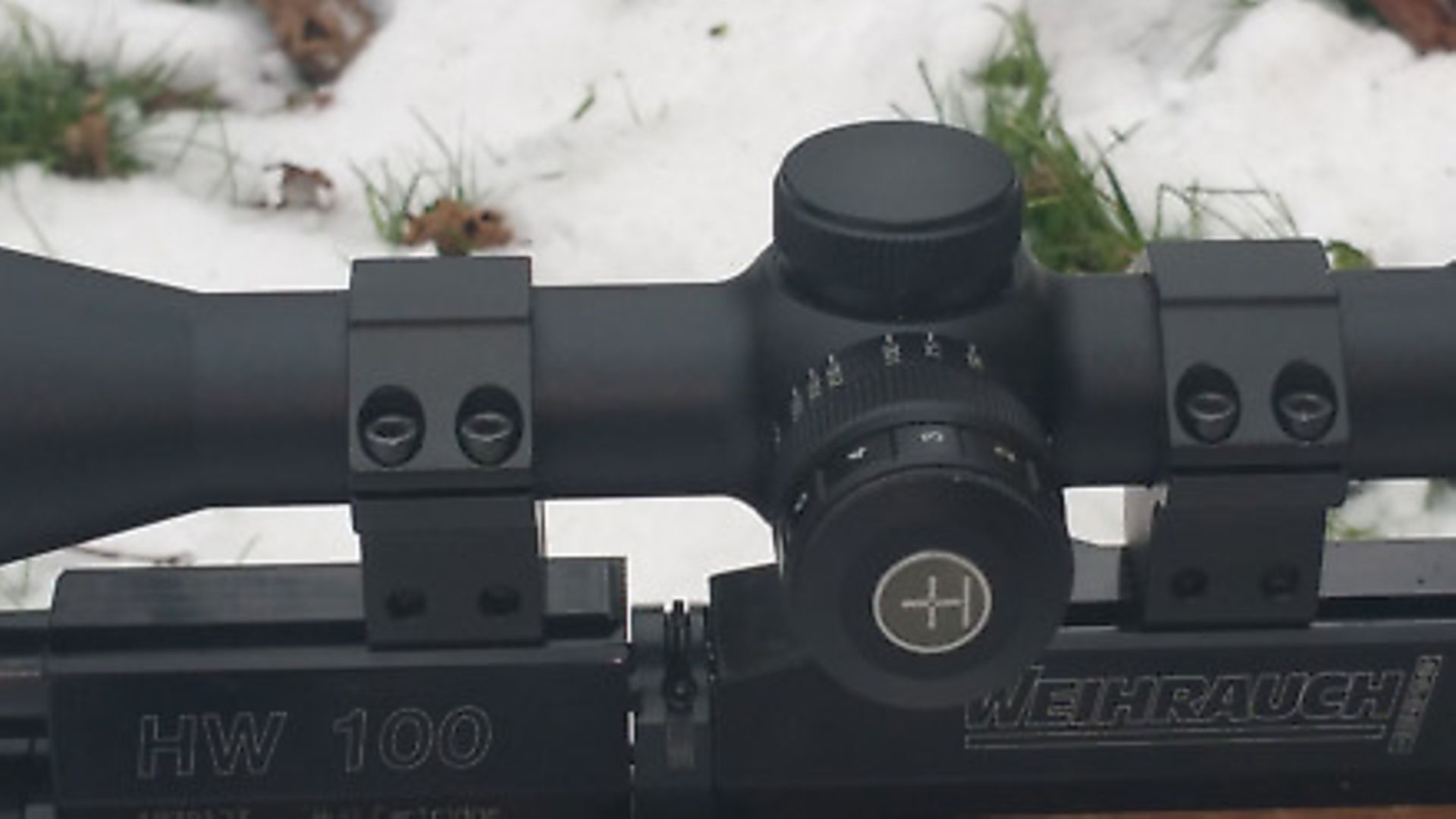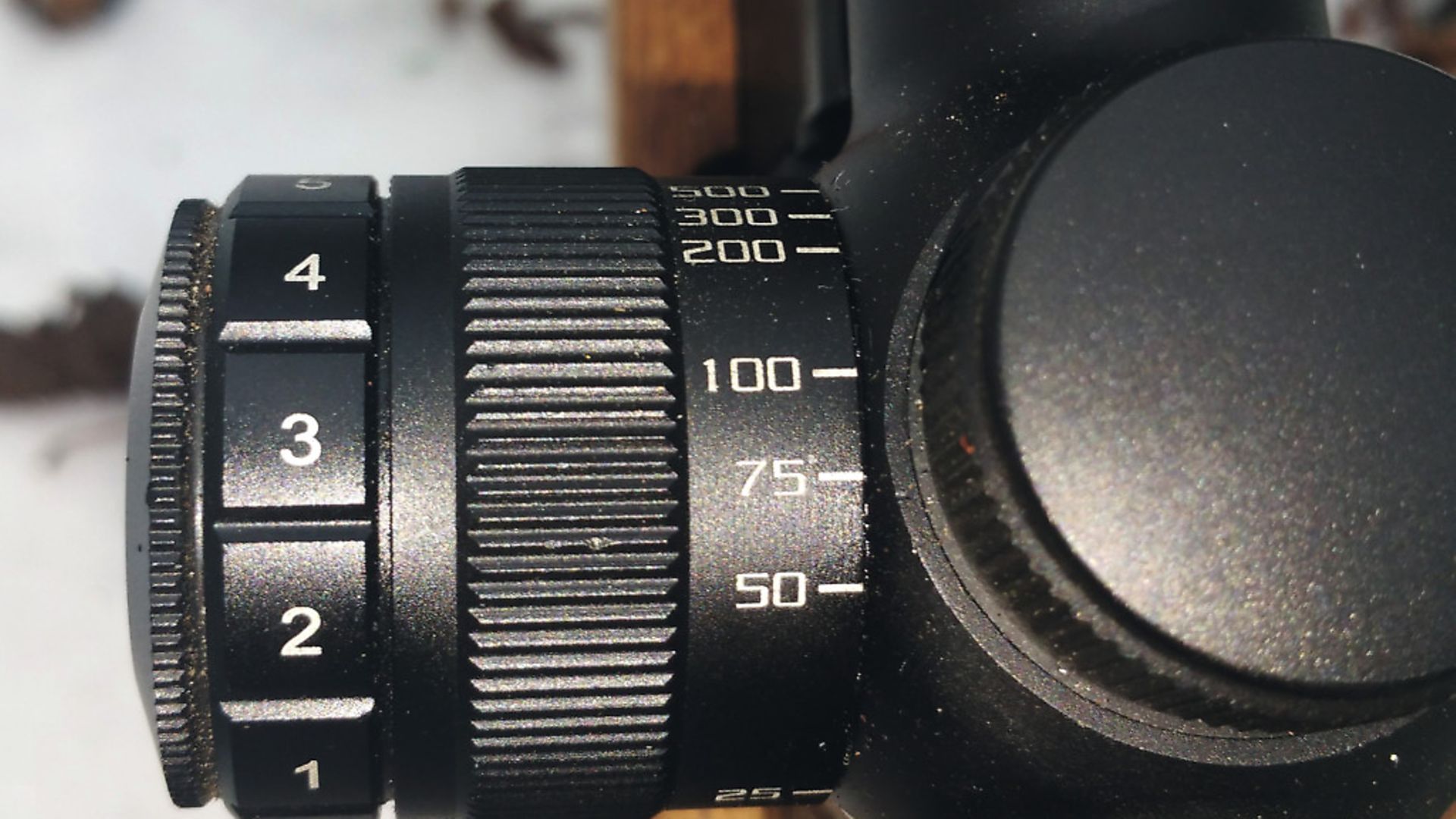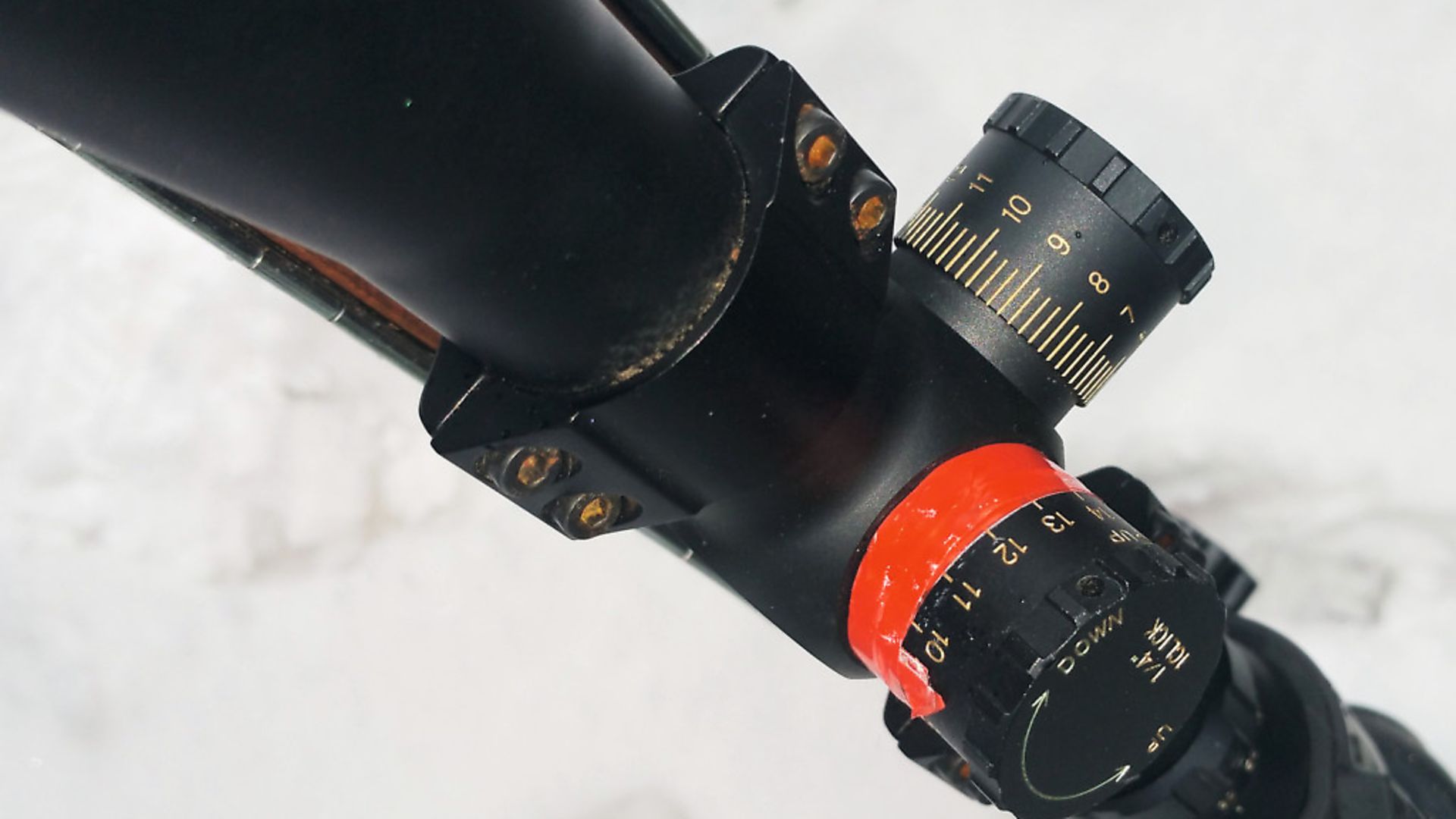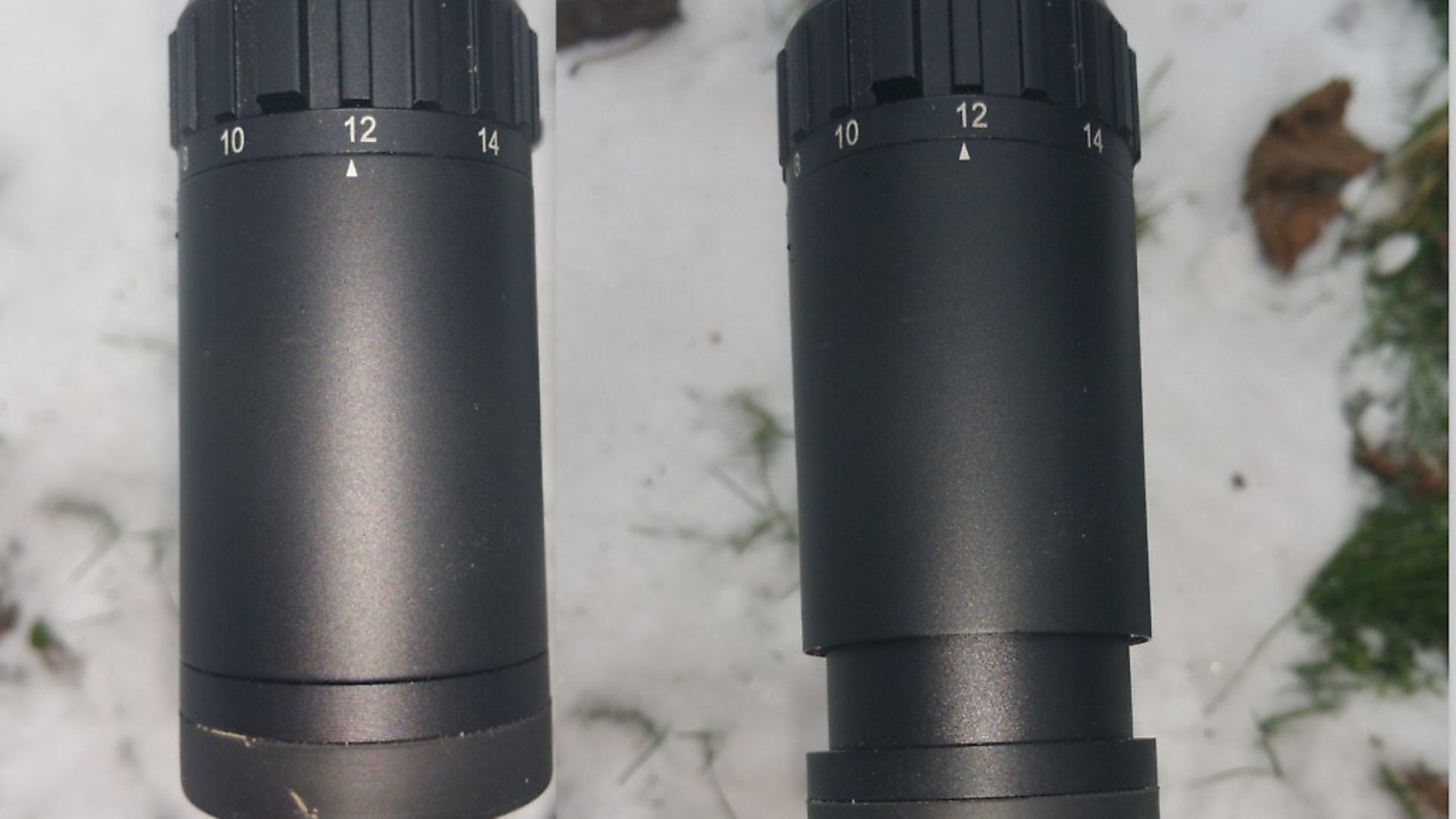Just what makes a scope? Gary Chillingworth takes an informed view
 credit: Archant
credit: Archant
A few months back I was asked by a reader to explain what all the different parts of a rifle were, so we went into the joys of regulators, hamsters, butt pads and cheek risers, and as I was putting it to paper, I was thinking, ‘guns are easy; scopes, on the other hand, are a whole different matter. So, with this in mind, here is a potted explanation of the world of telescopic sights and believe me, by the end, you will be just as confused as I am right now.
OK, let’s start with size. This might be controversial – bigger is not always better. When you go into a gun shop, there will be a vast array of scopes on display and if, like me, you are attracted to big and shiny things in display cabinets, you might be tempted by a leviathan of a scope, but these are only any good if you intend to shoot field target, and we will come back to that in a minute.
A scope is made up of eight main elements:
1. The objective lens – the lens at the front.
 credit: Archant
credit: Archant
2. The ocular lens – the lens at the back.
3. The body tube – the bit that connects them and holds the internal lenses.
4. The elevation and windage turrets – the bits that let you adjust the scope.
5. The parallax adjuster – the item you use to focus the scope and set it up for the distance at which you’re shooting.
6. The dioptre adjuster – the focus ring that lets you get the reticle in focus.
7. The magnification adjuster – a rotating collar that allows you to adjust the magnification of the scope.
8. The reticle – the rifle’s crosshairs, used to aim the gun.
 credit: Archant
credit: Archant
The easy ones
Before we go any further, we’ll get the easy ones out of the way – the windage and elevation adjusters.
If you shoot a target for the first time and your pellet hits to the right, you will need to rotate the windage turret, found on the right side of the scope, to the left. Windage means right and left. The adjuster turrets can sometime be found under screw-on caps, or they might be the competition type, which are exposed. These click in and out and then rotate. Each click of the turret will move the scope’s cross hairs a set distance, and with repeated shots, you can dial the scope in so that the pellet lands where the cross hairs are looking.
Then there is the elevation, or ‘up and down’. Before you set this, you need to decide at what distance you want your cross hairs to be set. If you are going to shoot in the garden and the maximum range you have is 20 yards, then set out a target with a backstop and shoot the targets. If your pellet hits low, then give it a few clicks up, and if it’s high try a few clicks down. We will come back to this and I’ll write a piece about setting up a scope together with a few tricks and tips that will help you to maximise its potential.
The next easy one is the magnification. Unless you are going to shoot field target (FT), then 12x is all you really need, and most shooters use 10x or below. The reason for this is twofold; as you increase the magnification of a scope, it shows you every wobble and tremor you have, which people find off-putting. When you look through a scope at 20x magnification it can feel like you are all over the place.
The second is usability. If you have a high mag’ scope set on 40x, as an FT shooter would, you’ll only be able to see targets with clarity at a very specific distance. You will need to readjust the scope’s parallax setting to focus the scope for each new target, and this is how FT shooters use their scopes to rangefind a target.
For example, with a scope set on 10x you will be able to see every target between 17 and 45 yards with a fair amount of clarity. If you have a scope set on 40 times, you will only be able to see a target from say 38 to 40 yards, unless you adjust the scope’s parallax ring for the specific distance at which you want to shoot. Also, scopes with high mag’ are either very expensive or lower quality and this is because the lenses for a high mag’ scopes are insanely expensive.
 credit: Archant
credit: Archant
Lenses
This brings me to lenses. Now, a good rule of thumb is, the bigger the lens the more expensive the scope is going to be. In the shooting world, lenses and scopes are often referred to as ‘glass’ and you get what you pay for. Companies like March and Leopold have scopes that start from £1000 upwards, but luckily, you don’t need to pay this sort of money for sub-12 ft.lbs. air rifle shooting. Scopes like the Hawke Vantage SF 4-16 x 50 will give you clarity for a much smaller budget, and with their high-end coatings that reduce glare and misting up, you can get a high-end product for low-end money.
The objective lens on this Hawke is 50mm, and for back-garden shooting, hunting or HFT shooting, this scope’s objective is on the large size. However, Hawke have always managed to produce stunning clarity and keep the prices down, and this scope continues the proud tradition. A large objective will help the scope to draw in light and make the target look bright and clear. If you buy a very cheap scope with a big objective and high magnification, though, you can often struggle to get the clarity you need. A good tip is go to a gun shop and look through as many scopes as possible; always set them to 10x magnification and go just before dusk, if you can, so you can look in poor light.
The ocular lens is the one you look through, and will often have a fast-focus ring attached. Essentially, this is a focusing ring that will allow you to set the image you see of the reticle correctly for your eyes. I wear glasses, but I have been able to set up my scope so that I can shoot without them. Take the time to get your reticle in perfect focus and then leave it alone.
Body tube
The body tube will come in one of two sizes, 25mm or 30mm, and to be honest, I have never found a huge difference between the two.
In theory, a 30mm tube will allow more light to pass through the scope, but if you have a scope with a 25mm tube and it’s light and bright and you are happy with the quality, then go with it. Also, it’s worth remembering that mounts for 30mm scopes can be quite a bit more expensive.
I have not even scratched the surface on setting up a scope and how to get the best from your reticle and parallax setting, so this is something that we are going to delve into a bit deeper at a later date. If there is something you specifically want me to answer, drop me a line at garychillingworth36@gmail.com.
__________________________________________________
Fitting a scope for improvement
Scope review: PAO Emerald 10 x 56 IR
Review: Enfield scopes available at Armex